Combination skin can be tricky to manage. If you have this skin type, finding the best skincare routine for combination skin that works for both your oily and dry zones can be a challenge.
But fear not! In this guide, we will walk you through a simple, effective, and budget-friendly skincare routine tailored specifically for combination skin. We’ll also recommend products that will give you glowing, balanced skin without breaking the bank. This is the best skincare routine for combination skin to help you achieve your skincare goals.
Having combination skin means that you might struggle with an oily T-zone (forehead, nose, and chin) while the rest of your face could be dry or sensitive.
It’s important to keep your skincare routine balanced, so we’ll guide you through how to achieve that perfect balance without irritation.
Table of Contents
What is Combination Skin?
Combination skin is a skin type that has characteristics of more than one type of skin. It can be oily in some areas (usually the T-zone) while being dry or normal in others (usually the cheeks).
It’s essential to recognize your skin’s specific needs to determine the best skincare routine for combination skin. Understanding your skin type helps you choose suitable products and treatments. This targeted approach ensures effective results and healthier, balanced skin.
Why You Need a Special Skincare Routine for Combination Skin
When you have combination skin, you can’t just follow a generic skincare routine.
Using products that target oily skin might dry out the dry areas, and products meant for dry skin may not effectively address the oiliness of your T-zone.
Therefore, it’s important to strike a balance by using products that address the needs of both skin types at once.
Step 1: Cleanse Your Skin with the Right Product
Cleansing is the first step in any skincare routine, and it’s especially important for combination skin.
You need a cleanser that can remove excess oil in the T-zone while still being gentle on the dry areas of your face.
Recommendation: Opt for a gentle, foaming cleanser that cleanses without stripping your skin of its natural oils. A gel-based or hydrating cleanser can work well, as they effectively cleanse the skin without over-drying.
Step 2: Tone Your Skin for a Balanced Feel
Toning is a vital part of your skincare routine for combination skin. A toner can help balance your skin’s pH and hydrate your skin without causing extra oil production or drying it out.
Recommendation: Choose a toner with hydrating ingredients such as aloe vera or glycerin for the dry areas, and a toner with witch hazel or salicylic acid for the oily areas.
This will assist in balancing your skin’s oil levels while maintaining adequate moisture.
Step 3: Exfoliate to Eliminate Dead Skin Cells
Exfoliation is crucial for removing dead skin cells, which helps you achieve a smoother and brighter complexion.
For combination skin, choose a gentle exfoliant to avoid irritation in dry areas and to effectively cleanse the pores in the oily T-zone.
Recommendation: Opt for a mild exfoliant with natural exfoliating agents like jojoba beads or a chemical exfoliant with AHAs or BHAs, which will be gentle yet effective.
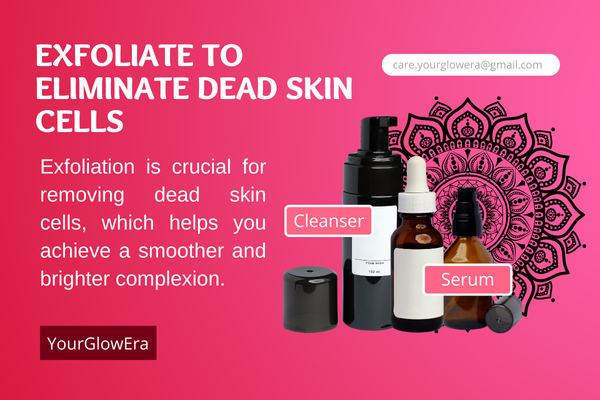
Step 4: Apply a Hydrating Serum
A hydrating serum helps deliver moisture to the skin while keeping it light and non-greasy. This is particularly helpful for the drier areas of your face.
Recommendation: Look for serums containing hyaluronic acid or glycerin, which are great for attracting moisture to the skin without adding extra oil. Stay away from serums that are too thick or heavy.
Step 5: Use a Moisturizer Suitable for Combination Skin
Moisturizing is vey important for all skin types, including combination skin. Choose a lightweight, non-greasy moisturizer that offers sufficient hydration without clogging pores or making your skin feel oily.
Recommendation: Look for lightweight, oil-free moisturizers for your T-zone and a richer moisturizer for your cheeks or dry areas. A gel-based moisturizer is perfect for combination skin.
Step 6: Apply SPF Every Day
Sunscreen should be part of every skincare routine, even if you have combination skin.It protects your skin from harmful UV rays, helping to prevent premature aging and skin damage.
Recommendation: Everyone should use a broad-spectrum sunscreen with at least SPF 30 every day. If your skin tends to get oily, choose a non-comedogenic, mattifying sunscreen.
Step 7: Treat Specific Skin Concerns with Targeted Products
If you have specific skin concerns like acne, dark spots, or wrinkles, consider adding targeted treatments to your skincare routine.
For example, a benzoyl peroxide treatment for acne or a retinol treatment for fine lines can help address these concerns.
Recommendation: Incorporate spot treatments or serums for acne or hyperpigmentation, depending on your skin needs.
Step 8: Nighttime Routine – The Importance of Night Creams
Your nighttime skincare routine should emphasize repairing and hydrating your skin while you sleep. Night creams often have a thicker consistency and contain ingredients that help your skin regenerate overnight.
Recommendation: Use a lighter night cream for your oily zones and a more nourishing one for your dry areas.
Step 9: Don’t Forget Your Eyes
The delicate skin around your eyes requires gentle, soothing care. Invest in an eye cream that can target puffiness, dark circles, and fine lines. For the best skincare routine for combination skin, choosing the right eye care products helps maintain the overall health and appearance of your skin.
Recommendation: A lightweight, hydrating eye cream can keep the skin under your eyes moisturized and smooth.
Step 10: Keep Your Skin Hydrated Throughout the Day
For combination skin, dehydration can cause excess oil production, especially in the T-zone. Keeping your skin hydrated throughout the day will help keep oil production under control.
Recommendation: Keep a facial mist with hydrating ingredients on hand to refresh your skin throughout the day. Look for mists with aloe vera or rose water for a cooling, hydrating effect.
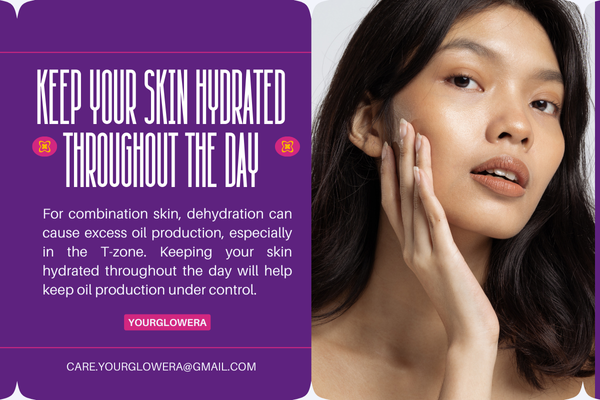
Step 11: Pay Attention to Your Diet and Water Intake
Your diet and drinks can impact the overall health and appearance of your skin. A balanced diet and staying hydrated are crucial for maintaining clear and healthy skin.
For the best skincare routine for combination skin, incorporating proper nutrition and hydration supports optimal skin balance and health.
Recommendation: Stay well-hydrated by drinking plenty of water, and maintain a diet high in antioxidants, omega-3 fatty acids, and vitamins to promote healthy, glowing skin.
Step 12: Adjust Your Routine Based on the Season
Depending on the season, you may need to adjust your skincare routine to effectively protect and nourish your skin year-round. In winter, your skin may need more hydration, while in summer, you may need to focus on oil control.
To achieve optimal results, follow the best skincare routine for combination skin tailored to seasonal changes.
Recommendation: Adjust your moisturizer and sunscreen according to the season to keep your skin balanced year-round.
Step 13: Avoid Harsh Products
Harsh products can aggravate combination skin. It’s important to use gentle, non-irritating products that don’t strip your skin of its natural oils.
For the best skincare routine for combination skin, prioritize using gentle cleansers and moisturizers to maintain balance and avoid irritation.
Recommendation: Avoid using harsh scrubs or alcohol-based products that can dry out your skin and trigger more oil production.
Step 14: Take Your Skin Type Into Account When Choosing Makeup
When selecting makeup products, make sure they are suitable for your combination skin. Choose oil-free foundations and products that won’t block your pores.
For the best skincare routine for combination skin, opt for non-comedogenic makeup that complements your skin type and helps maintain a balanced complexion.
Recommendation: Choose foundations that are oil-free and non-comedogenic to ensure they don’t make your skin more oily or clog pores.
Step 15: Regularly Reevaluate Your Skincare Routine
Your skin may change over time, so it’s important to reevaluate your skincare routine periodically. If your skin becomes more oily or dry, you may need to make adjustments.
For the best skincare routine for combination skin, staying attentive to these changes ensures your skin remains balanced and healthy.
Recommendation: Always listen to your skin and be willing to modify your routine when necessary.

Conclusion:
Achieving the best skincare routine for combination skin doesn’t have to be complicated.
By following these steps and using the right products for both the dry and oily areas of your face, you can create a routine that works for you.
Remember, skincare is about consistency and finding the products that suit your skin’s unique needs.
If you’re struggling with fungal acne and looking for effective ways to manage and treat it, our comprehensive guide is exactly what you need to establish the best skincare routine for combination skin.
From identifying the right ingredients to avoiding common triggers, this blog covers everything to help you achieve healthy, clear skin. Read the full article on “Fungal Acne Skincare Routine: Everything You Need for Healthy, Clear Skin“ to discover expert tips and product recommendations tailored for fungal acne.
Don’t miss out on essential advice that can transform your skincare routine and restore your confidence. Whether you’re just starting or looking to refine your existing regimen, this detailed guide provides actionable steps to help you manage fungal acne effectively.
For a complete overview, visit “Fungal Acne Skincare Routine: Everything You Need for Healthy, Clear Skin“ now!
Frequently Asked Questions
1. What is the best skincare routine for combination skin?
The best skincare routine for combination skin includes:
1. Cleanser: Use a gentle foaming or gel cleanser.
2. Exfoliation: A gentle chemical exfoliant like AHAs or BHAs.
3. Toner: Hydrating, alcohol-free toner.
4. Serum: Vitamin C or niacinamide for brightening, or a mattifying serum for the T-zone.
5. Moisturizer: Non-comedogenic, lightweight moisturizer.
6. Sunscreen: Broad-spectrum SPF 30 or higher.
2. What is the 4-2-4 rule in skincare?
The 4-2-4 rule in skincare involves cleansing in three stages: Spend 4 minutes with an oil-based cleanser to remove makeup and dirt, then follow up with 2 minutes using a water-based cleanser to cleanse the skin. Finish with 4 minutes of rinsing your face with lukewarm water to ensure that all residue is removed. Incorporating this method can be part of the best skincare routine for combination skin.
3. What are the 7 steps of skincare?
The 7-step skincare routine, often associated with Korean beauty, involves:
1. Oil-based cleanser: to remove makeup and impurities.
2. Water-based cleanser: for a second cleanse to remove residual dirt.
3. Exfoliant: for sloughing off dead skin cells (use 2-3 times a week).
4. Toner: to balance the skin’s pH and prep it for the next steps.
5. Essence: for additional hydration and skin-repairing properties.
6. Serum: to target specific skin concerns like pigmentation or acne.
7. Moisturizer & Sunscreen: to lock in hydration and protect your skin from the sun.
4. What product is best for combination skin?
For combination skin, look for oil-free, hydrating products that provide balance. Choose a gentle cleanser like CeraVe Foaming Cleanser, a niacinamide serum for calming oil, and a gel-based moisturizer like Neutrogena Hydro Boost for hydration without heaviness. This is part of the best skincare routine for combination skin.
5. Is vitamin C good for combination skin?
Yes, vitamin C is excellent for combination skin as it helps brighten the complexion, reduce hyperpigmentation, and provide antioxidant protection without causing oiliness or irritation, making it an essential part of the best skincare routine for combination skin.
6. What is the perfect skin routine?
The best skincare routine for combination skin is one that is customized to your skin type and concerns. Generally, it should include a gentle cleanser, hydrating toner, a targeted serum for specific issues (like acne or pigmentation), a light moisturizer, and sunscreen for protection.
7. What combination skin should avoid?
People with combination skin should avoid products that are overly heavy or rich (which can worsen oiliness) or harsh exfoliants that may irritate dry areas. Also, products with high alcohol content or fragrances can be too harsh for combination skin, so choosing gentle, balanced formulations is key to the best skincare routine for combination skin.
8. What is the 7-layer skin routine?
The 7-layer routine is a Korean skincare method where seven layers of hydrating toner are applied to the face. It is used to deeply hydrate and lock moisture into the skin, leaving it plump and glowing. It’s typically followed by serums and moisturizer
9. What is the Korean face wash method?
The Korean face wash method involves double cleansing. First, use an oil-based cleanser to remove makeup, followed by a water-based cleanser to thoroughly clean the skin. This method is essential for the best skincare routine for combination skin, as it ensures the skin is completely free of impurities before moving on to other skincare steps.
10. What is the 60-second rule in skincare?
The 60-second rule suggests that you should spend 60 seconds massaging your cleanser into your skin to allow it to fully cleanse and remove dirt, oil, and makeup. This method ensures that your skin is thoroughly clean and ready for the next steps in your best skincare routine for combination skin.
11. What is the best skincare routine for combination skin?
A good routine involves cleansing twice daily with a gentle cleanser to remove excess oil and dirt. Use targeted treatments for oily zones and hydrating products for dry areas. Finish with a lightweight moisturizer and sunscreen for overall protection. For the best skincare routine for combination skin, balancing these steps helps maintain harmony and healthy glow across different skin areas.
12. What are must-have products for a best skincare routine for combination skin?
A gentle cleanser, a hydrating toner, and a targeted treatment like niacinamide or salicylic acid are essential. Use a lightweight, non-greasy moisturizer and always finish with broad-spectrum sunscreen during the day. These products help balance and protect your skin effectively.


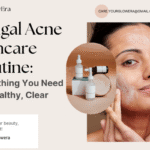
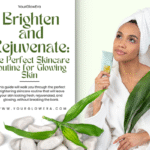




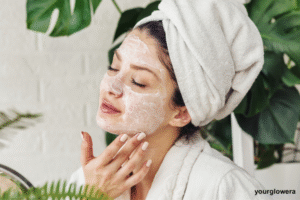
Leave a reply